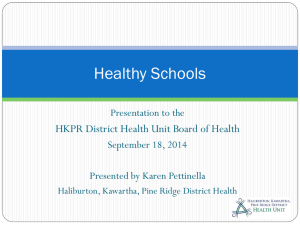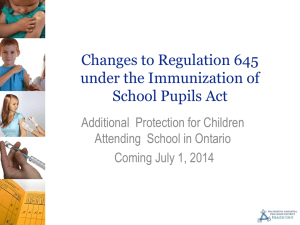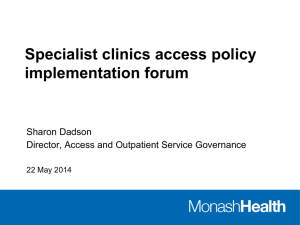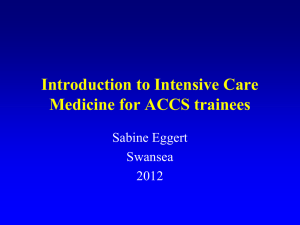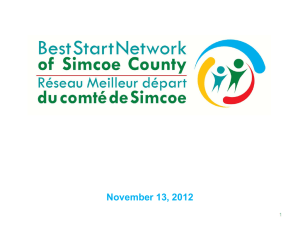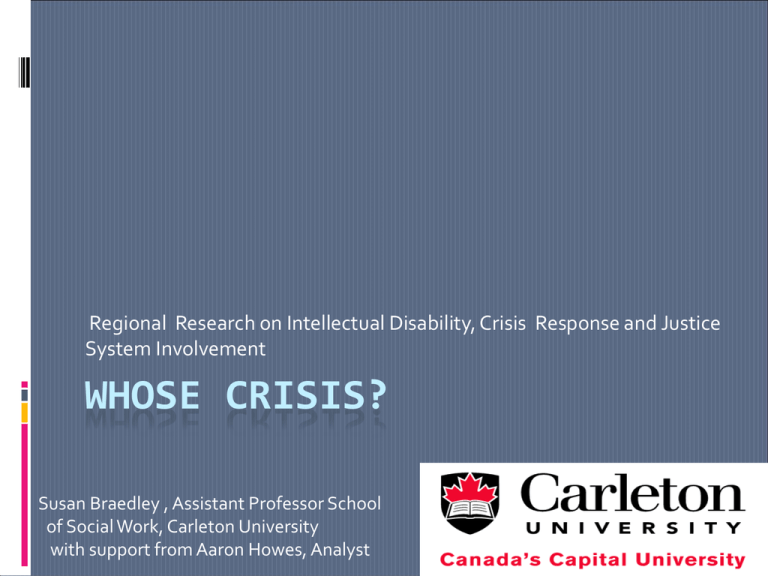
Regional Research on Intellectual Disability, Crisis Response and Justice
System Involvement
WHOSE CRISIS?
Susan Braedley , Assistant Professor School
of Social Work, Carleton University
with support from Aaron Howes, Analyst
This research was funded by:
CIHR/CHSRF Chair in Health Services and
Nursing Research at York University
Carleton University Faculty Research Fund
Today’s Outline:
1. What is the research about?
2. What did we find so far?
3. What other questions do our findings
suggest?
4. Where to from here ?
What is the research about?
I am investigating the
growth and expansion
of crisis/emergency
services that serve
vulnerable populations
to ascertain the degree
to which crisis services
are used regularly .
Some people are living
in constant “crisis”.
Sub-study: Community Crisis
Response
Quantitative study of
service data from
Central East Network
of Specialized Care,
serving adults with ID
and mental health or
behavioural conditions
Established in 2007
across Ontario as part
of policy shift to
community care
Community Crisis Response for
those 16+ who have an ID
Available 24/7
Time-limited
intervention
Active process – relief
for the immediate
crisis
Can be used to prevent
escalation of
difficulties
What did we want to know?
Who uses crisis response for people with
intellectual disabilities?
What problems or issues does this service
address?
How often do people use this crisis response?
What factors are most associated with
multiple crisis response use?
How does crisis response use compare to
intensive case management services use for
people with intellectual disabilities?
Why should HSJCs care?
Our findings show a relation between crisis
response use and justice system involvement
that may offer opportunities for early
intervention.
Our findings show that some regions are
doing better than others at keeping people
out of the justice system... Further research
will tell us how and why.
What did we do?
Quantitative analysis of service statistics from
the crisis response and intensive case
management services using SPSS.
Aggregation of data by individual, rather than
by incident.
Analysis of correlations with justice system
involvement, among other factors
Comparison of service data from individual areas
of the Central East region to see if “local”
matters.
Parameters:
Central East Network of Specialized Care
Data ( HKPR, Simcoe County, York Region,
Durham Region) from inception of service in
Aug 2007 to June 2009.
This is 18 months of data.
An update is currently being prepared.
Population:
Our analysis identified:
320 unique individuals in the data set.
65 had used only intensive case management
(20%).
255 had used the crisis response service (80%).
60 individuals had used at least one incident of
crisis response and case management services.
Factors for Analysis
Living Arrangements
Reasons for Referral
Involvement with the Justice System
Referral Agent
Diagnosis or Condition
Age/Sex
Number of crisis response service uses.
General Profile
53% of clients have used crisis services more
than once
Overall, males receive service more often
than women (59/41).
The average age of clients is 31 years.
Half of clients are described as dual
diagnosis.
Just over half of clients have involvement
with the justice system.
Living Arrangements
Living
Arrangement
Total Unique
Clients
(n= 320)
21%
Intensive Case
Management
(n=65)
29%
19%
Family
Supportive
Housing
Group Home
46%
39%
48%
8%
8%
8%
8%
6%
9%
Shelter
11%
9%
11%
6%
5%
7%
Independent
Crisis Response
(n=255)
IRM
Hospital
Indicates significant at 95% confidence
Indicates significant at 99% confidence
Reason for Referral
Reason for
Referral
Overall
(n= 320)
Crisis Response
( n=255)
Homelessness or
risk of
Lack of
Community
supports
Mental Health
45%
48%
Intensive Case
Management
(n=65)
34%
68%
66%
77%
55%
54%
57%
Behavioural Issues 58%
53%
75%
Family Sit Change
27%
28%
25%
Safety Concerns
48%
44%
60%
Indicates significance at 95% confidence
Indicates significance at 99% confidence
Crisis Response Level Comparison
Crisis
Gender
Age
Diagnosis Code
None
One
Two+
Male
Female
Mean
Developmental
Delay
Dual Diagnosis
Mental Health only
Autism
Justice Concerns
Independent
Family
Support House
Living Arrangement
Group Home
Shelter
IRM
Hospital
ICM
(n=65)
One Crisis
(n=85)
75%
25%
27.7 yrs
54%
46%
31.1 yrs
Two+
Crisis
(n=170)
55%
45%
32.6 yrs
49%
46%
54%
63%
11%
15%
99%
57%
7%
18%
25%
52%
8%
13%
48%
29%
20%
18%
39%
8%
6%
9%
0%
5%
44%
8%
4%
13%
0%
5%
50%
8%
12%
11%
1%
8%
Homeless (or at risk
of)
Lack of Community
Supports
Reason for Referral Mental Health
Behavioural Issues
Family Situation
Change
Safety Concerns
34%
42%
51%
77%
66%
65%
57%
75%
53%
41%
55%
59%
25%
18%
33%
60%
31%
51%
HKPR:
What does the data say?
Size of sample : ICM = 14 individuals
1 Crisis = 69 individuals
2+ Crises = 45 individuals
For those who had 1 crisis, justice
involvement was a factor for 33% .
For those who had 2+ crises, justice
involvement was a factor in 41% of the
cases.
HKPR Data
The client average age for crisis response is
30.5 years – older than the 25.9 years of ICM
clients.
The ratio of men to women is 62%/38%
Those who have 2+ incidents are much more
likely to live with families, and behaviour
issues are significantly higher than for those
who have only 1 incident.
HKPR Data compared to other
areas
Ratio of 1 instance to 2+ instances is consistent
across regions – about 66 % of individuals use
service more than once.
HKPR Crisis serves more men than other regions
At one incident, justice concerns are a factor for
58% of clients. At 2+incidents they are a factor
for 71% of clients. This is by far the highest
incidence of justice involvement in the region,
with York region at 50% for 2 + incidents, and
Simcoe the lowest at 18%
HKPR Data
HKPR crisis clients also seem to have fewer
behavioural issues, fewer safety concerns and
much less risk of family situation change.
Is this an actual difference or are people’s
situations being interpreted differently by
workers in HKPR?
To summarize so far:
Repeat crisis response use
appears to be related to
justice system involvement
In Central East, those who
use crisis response tend to
be older than what is
sometimes expected.
More than half of clients
use crisis response more
than once ( up to nine
times) in an 18 mo. period
So what?
We can follow up with
qualitative research
that will identify why
some regions have
different rates.
This can assist us to
identify promising
practices, or advocate
for resources.
Critical Questions
1. The goal is to provide this service. But is there a goal
behind the goal? Is this a service designed for frequent use?
2. Is the service really seeing situational crises or is it seeing
structural crisis in multiple service users?
3. What other services are these clients and their care
providers and/or supporters using?
4. When we talk about linkages and coordination, what is
the outcome we expect?
Where to from here?
Update the data set and have a trend analysis
completed in order to assess change over time
Qualitative study conducted to assess reliability
of quantitative data and to get better data on
interventions.
Propose that some provincial comparisons could
be useful to inform policy.
Closer look at those factors that show most
significance in order to identify promising
practices and plan effective services.
An invitation to research
A CIHR application has been made for a
planning meeting for those interested in
partnering in a research project that will
extend this research across Ontario.
All Networks of Specialized Care have signed
on, along with many other agencies. We
expect to be funded within the next year.
If you are interested, please contact me!
(susan_braedley@carleton.ca)

